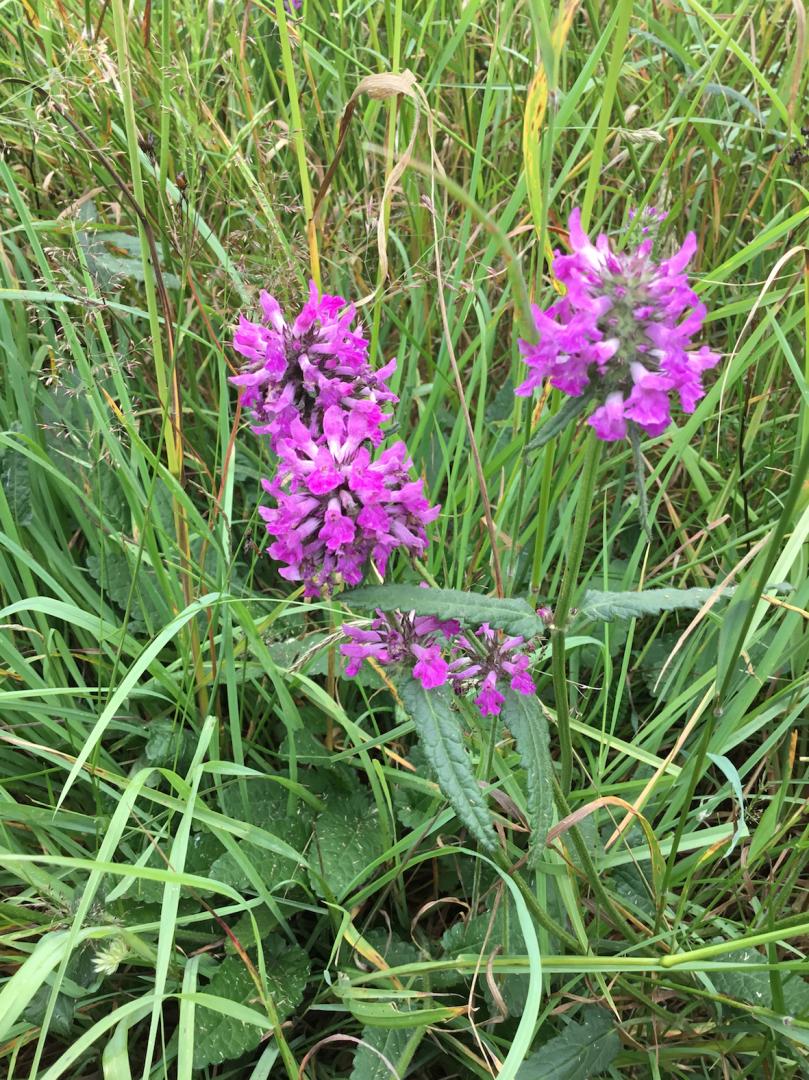Betony (Stachys officianalis) Common hedge-nettle
PLINY, the great Roman naturalist (AD23-79), who died in the eruption of Mount Vesuvius, wrote of “betonia or vettonica” as a Gaullish name for a plant known by a Spanish tribe called the Vettones. (Anyone with Spanish links recognises in that language, the sounds of ‘b’ and ‘v’ can be as good as interchangeable). We know it was valued in antiquity, as it bore the nick-name of “all-heal” . The Latin name “officianalis” means “used in medicine” .
A record in 1586 mentions that “though it grow wilde, yet it is set in many gardens” and it is indeed an attractive plant, with square, erect stems arising from a woody rhizome. The leaves at the stem base are 7-10cm long, and of a pointed oval shape, with regularly scalloped edges, And while the leaves on the flowering stems are smaller and finer, they show the same scalloping.
The flowers group into many purplish-red clusters, arranged rather like those of a red dead nettle. The plants can form large colourful colonies which bloom in June and July. The flowers themselves are tubular, with a flared lip and have a faint sweet aroma. The flowers are attractive to bees. The inflorescence itself is slightly prickly – indeed, almost nettle-like – and many small black seeds are produced in late summer.
Betony is fairly common throughout the UK, found in hedgerows, open woodland, grassland and heaths, usually on lighter soils. Its presence is generally an indicator that the habitat has been undisturbed for some time.
Betony has a long history of association with the supernatural. In Roman times, it was thought that the plant could expel devils, and it was approved by the emperor Augustus – otherwise a fairly sensible man – for just that purpose.
In the middle ages it was cultivated in churchyards to keep ghosts at bay.
The Elizabethan herbalist John Gerard was more concerned with the living. He recommends a conserve made with the flowers and sugar for, among other ailments, ruptures, cramps, and convulsions. He also considered it a remedy for the bites of mad dogs and venomous serpents (of which we, in the UK, have only one), for being drunk, and for the pain of sciatica.
Betony grows to the left (going upwards) of the diagonal path up from the Lower Demesnes, so if you are drunk, and feel haunted, give it a try.
Dr Richard Warren is a botanist from Barnard Castle
ADVERTISEMENT
Flora and fauna: A plant to ward off spirits
ADVERTISEMENT
ADVERTISEMENT
ADVERTISEMENT






